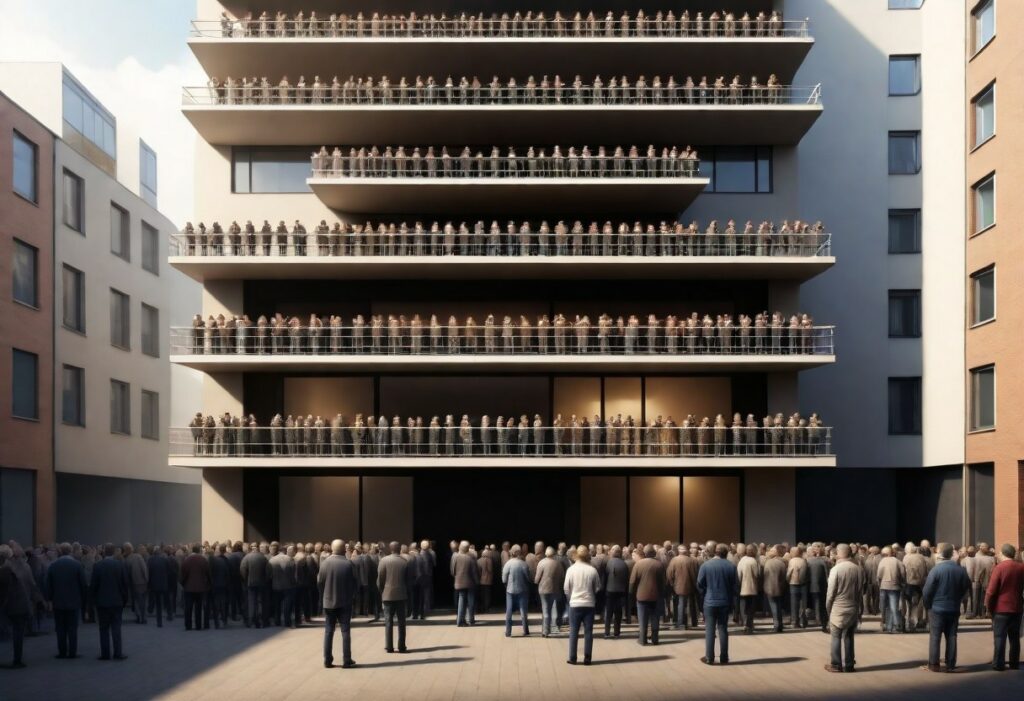Social stratification is like the building blocks of how society works. It sets up who’s on top and who’s not based on things like money, job, education, and where you stand in society. This system is deeply rooted in history, money, and culture, affecting every part of life. It decides who gets the good stuff and who doesn’t in society.
Let’s take a closer look at social stratification. It shows up in different ways depending on where you are and when it is. From way back in ancient times to now, there have always been groups of people who are seen as more important or powerful than others. Figuring out how social stratification works helps us understand why some people have more money, advantages, and opportunities than others. It also helps us see why inequality sticks around and how we might make things more fair for everyone. By really digging into social stratification, we can see all the different angles and find ways to make society more equal and just for everyone.
Historical Perspectives on Social Stratification:
Understanding why social stratification exists in societies today means looking back at how it all started in history. Throughout time, societies have always had ways of organizing people into different groups, with some having more resources, chances, and power than others.
In places like Mesopotamia, Egypt, and China, ancient societies had strict systems where your status was determined by things like your family background, job, or religion. Those at the top, like elites, had lots of advantages, like money and power. In medieval Europe, feudalism was another way society was organized, where lords owned big pieces of land and had control over the people who worked on it, called serfs.
In ancient times, slavery was also a big part of social stratification. People were treated as property, with no rights or freedom, and were owned by others who could exploit and mistreat them however they wanted.
When capitalism and big industries came around in the 18th and 19th centuries, things changed again. Now, wealth and power were in the hands of business owners and capitalists who controlled factories and businesses. This created new groups in society, like the rich capitalists and the working class who did the labor for them. But it also made the gap between the rich and the rest even wider.
As cities grew and industries expanded, where you worked, how educated you were, and how much money you had became big factors in how society saw you. This led to new kinds of social divisions and problems.
Looking at history, we see that social stratification has always been around, shaping how people live and what opportunities they have. Understanding where it all comes from helps us see why things are the way they are today. It also helps us figure out how we can make society more fair and equal for everyone.
Dimensions of Social Stratification:
Social stratification is a big concept that helps us understand how societies work and why some people have more resources and opportunities than others. There are three main parts to it: class, status, and power.
Class is all about money and jobs. It’s about where you fit in the economy. Some people are rich and have lots of money and fancy jobs. They’re in the upper class. Then there’s the middle class, which is in the middle, with regular jobs and incomes. Finally, there’s the lower class, where people struggle with things like not having enough money or jobs.
Status is about how much respect and recognition people get in society. It’s not just about money; it’s also about things like education and the kind of work you do. Doctors and professors, for example, usually get a lot of respect because they have special skills and knowledge.
Power is about being able to control things and make decisions that affect others. It’s not just about politics; it’s also about money and social connections. Some people have power because they have a lot of money or because they know a lot of important people.
These three things—class, status, and power—work together to shape where people stand in society. They’re influenced by lots of things, like how much money you have, what job you do, and how much education you’ve got. Understanding social stratification helps us see why some people have more than others and how we can make things fairer for everyone.
Factors Influencing Social Stratification:
Social stratification is about how society puts people in different groups based on things like money, education, and social status. Lots of things play into this, like economics, culture, politics, and history.
Money is a big part of it. If you have a lot of money, you’re often seen as having a higher status in society. But it’s not just about how much you have; it’s also about what kind of job you do and how educated you are. People with more education often have better jobs and more opportunities to move up in society.
Culture also plays a role. Things like race, ethnicity, gender, and religion can affect how society sees and treats people. For example, minorities and women often face discrimination and have fewer chances to get good jobs or education. Cultural norms and values also influence how we think about things like family, education, and work, which can reinforce inequality.
Politics and government policies also shape social stratification. Taxes, for instance, can help redistribute wealth from the rich to the poor, making society more equal. Welfare programs and labor laws also play a role in helping people who are struggling financially.
History matters too. Things like colonialism and slavery have left lasting impacts on society. They’ve created inequalities that still affect people today, especially in terms of race and economic opportunities.
Social stratification is a complex thing, influenced by many factors. Understanding it means looking at all these different pieces and how they work together. By addressing the root causes of inequality and creating policies that promote fairness and inclusion, we can make society better for everyone.
Consequences of Social Stratification:
Social stratification, which puts people into groups based on things like money, education, and social status, has big effects on society. It affects individuals, communities, and how society works.
For individuals, social stratification can make life harder. People from poorer backgrounds often struggle to get good education, healthcare, and jobs. This makes it tough for them to break free from poverty. They might not have the same chances as others to get ahead in life. Also, they might face discrimination when looking for jobs or trying to move up in their careers. This keeps them stuck in the same place and makes it hard for them to improve their lives.
Social stratification can also cause problems in society. It can make people feel angry or left out if they don’t have the same opportunities as others. This can lead to tension and conflict between different groups in society. Sometimes, it can even lead to protests or revolutions when people feel like they’re not being treated fairly.
On a broader level, social stratification can hold back economic growth and make it harder for society to work together. When there are big gaps between rich and poor, it’s harder for people to trust each other and work together. This can slow down progress and make it tough for everyone to succeed. In countries where everyone should have a say in how things are run, social stratification can also stop some people from getting involved in politics and making their voices heard. This makes it harder for society to be fair and inclusive for everyone.
So, social stratification has a lot of effects on society, from making life harder for individuals to causing tension and slowing down progress. To make things better, we need to address the reasons behind social stratification and create policies that give everyone a fair chance to succeed.
Addressing Social Stratification:
To tackle social stratification, we need to take a thorough and wide-ranging approach. This means dealing with the big underlying issues in society, like its structure, its rules, and how people think and behave.
Economic policies are a big part of this. They can help lessen the gap between rich and poor by doing things like making sure taxes are fair, sharing out wealth more evenly, and providing support for people who need it. Also, policies that make sure everyone has access to good education, healthcare, and housing can help level things out and give everyone a fair shot at success.
Another important thing is fighting against discrimination. Laws and rules that say no one should be treated unfairly because of things like their race, gender, or how much money they have can help make society fairer for everyone. And we can do more by teaching people to respect each other, challenge stereotypes, and include everyone, no matter who they are.
But it’s not just about policies. We also need to build stronger connections between people from different backgrounds. Getting involved in our communities, helping each other out, and working together can make us feel like we belong and are all in it together. And learning about each other’s cultures and backgrounds can help us understand each other better and treat each other with kindness and respect.
To really make a difference, we need to tackle social stratification from all angles. By making sure everyone has the chance to succeed, fighting against unfair treatment, and bringing people together, we can create a fairer and more inclusive world for everyone, now and in the future.










More Stories
Juvenile Delinquency: Social Factors Behind Youth Crime
Prostitution Among High-Class Women
The Silent Tragedy: Female Feticide